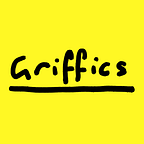All the gifts
The Play Well exhibition at the Wellcome Collection
Spoiler: I loved this exhibition.
Learning through play
The exhibition starts with Friedrich Froebel, the developer of the Kindergarten idea. It was a beautiful idea, to put play at the heart of the eduction of young children and it’s changed the world. But it’s Froebel’s gifts that really steal the show—they are a set of objects that give shape to open ended play. The first gift, for the youngest children, are knitted coloured balls each with a little knitted strap that makes them very easy to grab, swing and throw. The gifts grow in complexity to track the child as she grows and develops, providing the just the right amount of challenge. There are sets of increasingly intricate wooden blocks, a set of metal circles, wooden sticks, paper weaving, paper folding and embroidery; each providing all kinds of possibilities to explore.
Next to these gifts is a model of Frank Lloyd Wright’s Waterfalls. The connection to those wooden blocks is powerful, especially when you learn that his mother was a kindergarten teacher.
The next section introduced the Reggio Emilia approach. Something I’d not heard of before but it was very inspiring. The teacher is a guide, but the children shape the activities. The level of engagement you could see in the film documenting a class was fantastic.
Play therapy
I know nothing about the use of play in therapy but it seems to be very powerful as it allows children to access, and begin to communicate, thoughts and feelings they might otherwise struggle to put into words. Strategies include: encouraging children to build words in the safe space of sand trays; forming pictures using mosaic pieces; turning random scribbles into somethings.
How toys shape play
I loved seeing these toys drawn that were made by children in a refugee camp where they only have what is to hand and somehow manage to create something joyful.
I also enjoyed the nostalgia of seeing how toys like lego have developed.
With these more commercial toys it’s made clear how much they shape and reinforce cultural norms and the danger of them perpetuating stereotypes.
These adapted toys brilliantly demonstrate that commercial toys could do so much more to embrace childhood as its actually experienced; its richness, diversity, joys and challenges.
The role of risk
That children need risk as part of play is perhaps the most surprising part of the show. It’s surprising because we allow our children so little of it these days. A map showing the “right to roam” of three generations of children was pretty stark. Back in the day, kids or seven and eight were wondering pretty far afield, something that feels pretty unthinkable today—and this growing conservatism in parenting comes at a cost. Children who don’t get to play with risk don’t learn how to manage it. As parents, this really was an eye-opener.
The last section dealt with games and the amount of time kids spend in front of screens. This was less surprising but great to consider in the context of the rest of the exhibition. Video games do allow the scope for play, but not even Minecraft has open-ended-ness of real objects, in real space.
Why play matters
It’s that ability to take things and play with them that allows children (and me and you and anyone) to write the rules of a world as you shape it. That’s what makes play magical and transformative and powerful—it’s why play matters.
The book that accompanies this show is also excellent.
